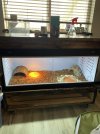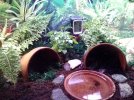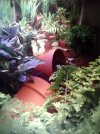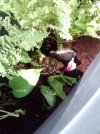Coconikki
Member
Hello! I am putting together a new enclosure for my baby Leopard tortoise arrival. It is a 48x24x24
-I am using a 32 inch Arcadia 14% UVB
-75 watt Arcadia Halogen for basking currently reading 93 at the hotspot.
-80 watt radiant heat panel for evenings to keep up temps.
- substrate is coco coir under Reptibark
- temps are cool side is at 82 warm side is at 85 basking is at 93 humidity 85.1
Am I okay?

-I am using a 32 inch Arcadia 14% UVB
-75 watt Arcadia Halogen for basking currently reading 93 at the hotspot.
-80 watt radiant heat panel for evenings to keep up temps.
- substrate is coco coir under Reptibark
- temps are cool side is at 82 warm side is at 85 basking is at 93 humidity 85.1
Am I okay?







